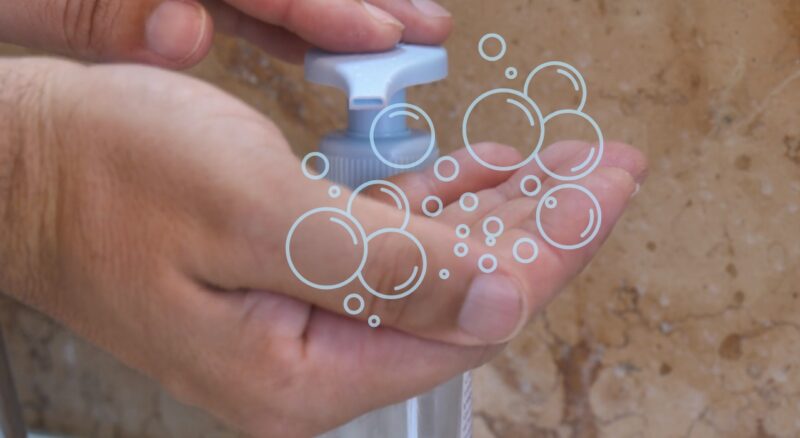Personal hygiene is a fundamental aspect of our lives that significantly contributes to our overall health. In the realm of urology, certain issues, while not medically severe, can lead to discomfort, embarrassment, and worry if not understood and managed properly. One such concern is smegma.
While the term may sound alien to some, the condition is relatively common. In this blog post, we will delve into the world of smegma – what it is, its causes, and how to effectively get rid of it.
A Brief Overview
What Is Smegma?

It is a substance that forms on the genitals of both males and females. It is a mix of dead skin cells, body oils, and other bodily fluids. While it may seem like a cause for concern, it’s a normal part of the human body’s functioning.
In men, it tends to accumulate on the tip of the penis, particularly in uncircumcised males under the foreskin. In women, it can be found around the clitoral hood and in the folds of the labia. The main purpose of smegma is to lubricate the skin, preventing friction that can lead to discomfort during sexual activity.
Why Does Smegma Develop?

The development of smegma is a natural bodily process. Our skin is constantly renewing itself, and this includes the skin in our genital areas. When old skin cells die, they often mix with our body’s naturally produced oils and are shed.
In many instances, this mixture gets trapped, especially in areas where there are folds of skin, such as in the genital areas. This is particularly common in males who are not circumcised, as the foreskin provides a space for it to accumulate.
Is It Harmful?
In general, a small amount of smegma is not harmful and is considered part of the body’s natural lubrication process. However, when it builds up, it can cause discomfort, itching, or even a foul smell. In men, if smegma is not regularly cleaned, it can lead to a condition called balanitis, an inflammation of the glans (tip of the penis).
How to Identify It?
Signs of Smegma Buildup

Recognizing smegma is relatively straightforward due to its unique characteristics. It is usually white or yellowish in color and can sometimes have a cheesy consistency.
In males, a buildup of smegma under the foreskin can lead to redness, irritation, inflammation, or a smelly discharge. In females, it can cause similar discomfort around the clitoral hood and labia. It can also lead to itchiness and redness in the genital area.
How to Confirm Its Presence?
While smegma is usually identifiable through the symptoms mentioned above, if you are unsure or if the symptoms persist even after cleaning the area, it’s best to consult with a healthcare provider.
Healthcare providers can perform a simple examination to determine whether the symptoms are indeed due to smegma or if they are indicative of another condition, such as a yeast infection or sexually transmitted infection.
When to Seek Medical Attention?
While smegma is usually not a cause for concern, there are instances where medical attention may be necessary. If the buildup is causing severe discomfort, or if symptoms such as redness, itching, and swelling persist despite regular cleaning, it may indicate an infection or other medical condition.
In such cases, a healthcare provider can perform an examination and, if necessary, provide appropriate treatment, such as antibiotics for an infection.
Prevention and Treatment
Maintaining Proper Genital Hygiene
Preventing smegma buildup primarily revolves around maintaining good personal hygiene. Regular washing of the genital area is key.
- For males, this means retracting the foreskin and gently washing the area with warm water. It is important to thoroughly rinse off any soap, as it can cause irritation if left on the skin.
- For females, washing the area around the clitoral hood and labia with warm water is recommended. Like in males, any soap should be rinsed off thoroughly.
Treating Buildups

In cases where smegma has built up, the treatment is typically as simple as proper cleaning. Using warm water and mild, unscented soap, gently clean the affected area. It’s important to be gentle and not scrub the area too hard, as this can cause further irritation.
After cleaning, thoroughly dry the area to prevent a moist environment where bacteria can thrive. This is especially important for males who can trap moisture under the foreskin.
What Not to Do?
While maintaining good personal hygiene is crucial, there are also certain things to avoid when dealing with smegma:
- Avoid using strong soaps or body washes, as they can irritate the sensitive skin in the genital area.
- Never attempt to forcefully retract the foreskin in boys or men in which the foreskin is still tight (a condition known as phimosis), as this can cause injury.
- Do not ignore persistent symptoms. If symptoms persist despite regular cleaning, it’s important to seek medical advice.
Misconceptions About Smegma

1. Smegma and Sexually Transmitted Infections (STIs)
Smegma is often confused with symptoms of sexually transmitted infections (STIs), especially when it leads to symptoms such as a smelly discharge or itching. However, it’s important to remember that smegma itself is not an STI.
It is a normal, physiological process that can happen to anyone, regardless of their sexual activity. That said, if you’re experiencing symptoms and are unsure, it’s always best to consult a healthcare provider.
2. Smegma and Circumcision
There’s a common misconception that circumcision completely prevents smegma. While it’s true that circumcision can reduce the buildups, it doesn’t entirely prevent it. It can still accumulate around the base of the penis head in circumcised men.
Circumcision is a personal decision that should be made considering a variety of factors, and the prevention of smegma is just one aspect to consider.
3. Smegma in Females
There’s a lack of awareness about the existence of smegma in females, largely due to societal taboos surrounding female genitalia. However, just like in males, it can accumulate in females, too, around the clitoral hood and labia. Regular cleaning can prevent discomfort and complications.
Final Words
Smegma, while a common and usually harmless condition, can cause significant discomfort if not managed properly. Maintaining good personal hygiene can help prevent and manage smegma. However, if symptoms persist despite regular cleaning, it’s important to seek medical advice. Understanding our bodies and how they work is the first step toward better health.





